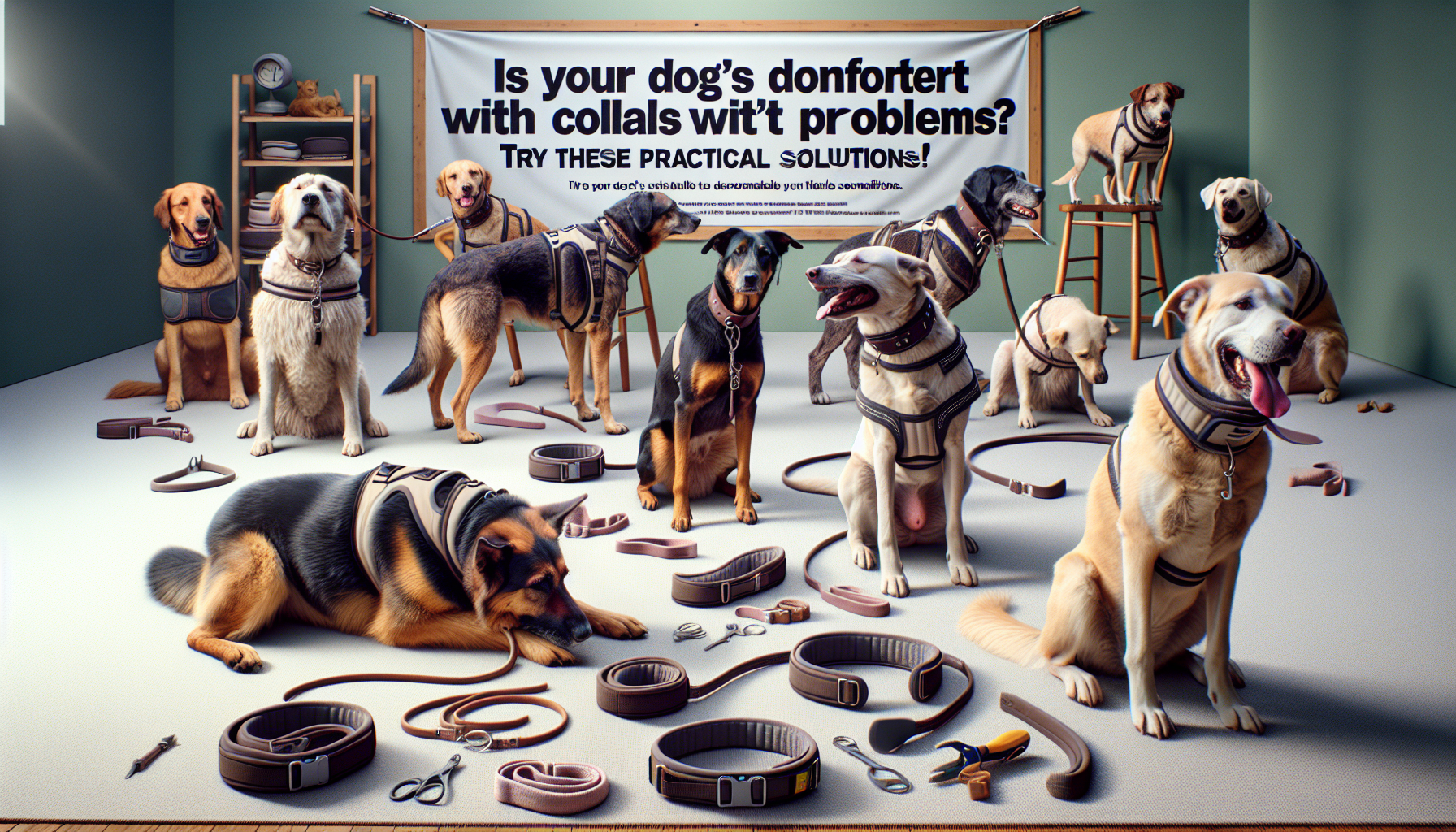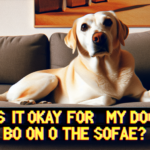Contents
Understanding the Link Between Discomfort and Collars
The Importance of Choosing the Right Collar for Your Pet
As pet owners, it is crucial for us to ensure that our furry friends are comfortable and safe. One area where discomfort can often arise is with the use of collars. Collars are commonly used for identification purposes and leash attachment, but if not chosen carefully, they can cause discomfort to our pets. Understanding the link between discomfort and collars is essential for selecting the right collar for your pet.
The Impact of Discomfort on Your Pet
Pets, just like humans, experience discomfort when they wear an ill-fitting or uncomfortable collar. This discomfort can lead to a range of negative effects on your pet’s well-being, both physically and emotionally. Some common signs of collar discomfort include:
- Constant scratching or pawing at the collar
- Restlessness or anxiety
- Skin irritation or redness
- Difficulty breathing or swallowing
- Changes in behavior, such as aggression or avoidance
It is important to note that these signs may not always be immediately noticeable, so it is crucial to regularly check your pet’s collar and observe any changes in behavior or physical discomfort.
Choosing the Right Collar
To ensure your pet’s comfort, it is essential to choose the right collar. Here are some factors to consider when selecting a collar for your pet:
1. Size and Fit
Choosing the correct size and fit is crucial. A collar that is too tight can restrict your pet’s movement and breathing, while a collar that is too loose may slip off or get caught on objects. Measure your pet’s neck circumference and choose a collar size that allows for proper adjustment.
2. Material
The material of the collar can greatly impact your pet’s comfort. Opt for soft, lightweight materials such as nylon or padded fabric that won’t irritate the skin. Avoid collars made of rough or scratchy materials that can cause discomfort or chafing.
3. Collar Type
Different collar types serve different purposes. Choose a collar that suits your pet’s needs, whether it be a regular buckle collar for everyday wear, a martingale collar for training, or a harness for dogs with respiratory problems or neck injuries. Each collar type has its own benefits and considerations.
4. Safety Features
Safety should always be a top priority. Look for collars with safety features such as reflective strips for increased visibility in low-light conditions and quick-release buckles in case of emergencies.
Regular Inspections and Upgrades
Even with the right collar, it is important to regularly inspect it for signs of wear and replace it when needed. As your pet grows, their collar may become too tight or too loose, so be sure to adjust or upgrade as necessary.
Remember, your pet’s comfort and safety are of utmost importance. By understanding the link between discomfort and collars, you can make an informed decision when choosing the right collar for your furry friend.
Identifying the Signs of Discomfort in Your Dog
As dog owners, it’s important for us to be able to recognize when our furry friends are feeling uncomfortable or in pain. Dogs can’t speak to us directly, so it’s up to us to pay attention to their behavior and body language. In this article, we will discuss some common signs of discomfort in dogs and how to address them.
1. Changes in Eating and Drinking Habits
One of the first signs that your dog might not be feeling well is a change in their eating and drinking habits. If your usually food-loving pup suddenly loses interest in their meals or stops drinking water, it could be an indication that something is wrong. Monitor their appetite and hydration levels, and if you notice any significant changes, consult your veterinarian.
2. Lethargy and Decreased Activity
Dogs are typically energetic and love to play and go for walks. If you notice that your dog is suddenly lethargic and less interested in activities they usually enjoy, it could be a sign of discomfort. Keep an eye out for any changes in their behavior and consult with your vet if you’re concerned.
3. Excessive Panting or Drooling
Panting and drooling are normal behaviors for dogs, especially after exercise or on a hot day. However, if you notice that your dog is panting excessively or drooling more than usual in situations where it’s not expected, it could indicate discomfort or pain. Make sure they have access to water and take them to the vet for further evaluation.
4. Aggression or Irritability
Dogs in pain may display aggression or become irritable. If your dog is growling, snapping, or displaying unusual aggression towards people or other animals, it’s important to take note of these behaviors. It could be their way of letting you know that they’re in pain or uncomfortable. Consult a professional dog trainer or veterinarian for assistance in addressing these behavior changes.
5. Restlessness and Difficulty Sleeping
When dogs are uncomfortable, they may have difficulty settling down and may appear restless. They may constantly change positions, have trouble finding a comfortable spot to lie down, or have difficulties sleeping through the night. If you notice these signs, it’s recommended to speak to your vet to determine the cause and provide appropriate treatment.
6. Changes in Grooming Habits
Dogs are naturally clean animals and groom themselves regularly. If you notice that your dog has stopped grooming or seems to be scratching or licking excessively, it could be a sign of discomfort. Itchy skin, allergies, or underlying medical conditions could be causing this behavior. Consult your veterinarian for a proper diagnosis and treatment plan.
7. Yelping or Whimpering
If your dog yelps or whimpers when touched or when performing certain movements, it’s a clear indication that they’re experiencing pain or discomfort. Pay attention to any specific areas that seem to elicit a response and gently examine your dog for any signs of injury or inflammation. Consult your vet for further examination and treatment.
By being observant and vigilant, we can identify the signs of discomfort in our dogs and take appropriate action. Remember, if you notice any significant changes in your dog’s behavior, appetite, or activity levels, it’s always best to consult your veterinarian for proper diagnosis and treatment. Your furry friend’s well-being is in your hands, so let’s make sure they’re happy and healthy.
Exploring Practical Solutions to Reduce Discomfort with Collars
The Importance of Comfortable Collars for Pets
Pets are an integral part of our lives, and it’s our responsibility as pet owners to ensure their well-being. One aspect of pet care that often gets overlooked is the comfort of their collars. Collars are not just fashion accessories; they serve a vital purpose in keeping our pets safe and secure. However, if not chosen or adjusted correctly, collars can cause discomfort and even harm to our furry friends. Fortunately, there are several practical solutions available to reduce any discomfort associated with collars.
Choosing the Right Collar for Your Pet
The first step in ensuring your pet’s comfort with their collar is to choose the right one. There are various types of collars available on the market, each with different features and benefits. Here are a few options to consider:
1. Adjustable Collars: These collars come with adjustable straps, allowing you to find the perfect fit for your pet. They are great for growing animals or those with fluctuating weights.
2. Padded Collars: Padded collars are designed with additional cushioning, providing extra comfort around your pet’s neck. This type of collar is especially beneficial for pets with sensitive skin or long hair.
3. Martingale Collars: Martingale collars are a popular choice for dogs with smaller heads and larger necks. They tighten slightly when pulled, preventing the dog from slipping out of the collar while still ensuring comfort.
4. Breakaway Collars: Breakaway collars are essential for cats and small dogs. They have a safety mechanism that releases the collar if it gets caught on something, reducing the risk of strangulation.
Ensuring Proper Fit and Adjustment
Even if you have chosen the right collar for your pet, it’s crucial to ensure proper fit and adjustment. Here are some tips to keep in mind:
1. Measure accurately: Use a flexible tape measure to measure your pet’s neck circumference. Leave enough room for comfort and adjustability.
2. Check for tightness: Ensure that the collar is snug enough to prevent slipping, but not too tight to cause discomfort or restrict breathing.
3. Regularly check for fit: Periodically check the collar’s fit, especially for growing puppies or weight fluctuations in adult animals.
Additional Comfort-Enhancing Accessories
In addition to choosing the right collar and ensuring proper fit, there are a few accessories you can explore to further enhance your pet’s comfort while wearing a collar:
1. Collar Covers: Collar covers are made of soft fabrics or materials that add an extra layer of cushioning and prevent chafing.
2. Anti-Chafing Balms: These balms are specifically designed to reduce friction and soothe any discomfort caused by collar rubbing against the skin.
3. The Cone of Shame Alternative: If your pet needs to wear a cone after surgery or for any other reason, consider using inflatable neck pillows or alternative cone designs that provide better mobility and comfort.
Remember, the comfort of your pet should always be a top priority. By selecting the right collar, ensuring proper fit and adjustment, and exploring additional comfort-enhancing accessories, you can minimize any discomfort associated with collars and keep your furry friend happy and healthy.
Tips for Successfully Implementing Comfortable Collar Solutions
When it comes to our beloved pets, their comfort and safety is always a top priority. As pet owners, we want to ensure that our furry friends are happy and content. One area where this is especially important is with their collars. A collar that is uncomfortable or ill-fitting can cause discomfort, irritation, and even injury to our pets. That’s why it’s crucial to implement comfortable collar solutions. Here are some tips to help you do just that:
1. Choose the Right Size and Material
The first step to ensuring your pet’s collar is comfortable is to choose the right size and material. Measure your pet’s neck properly to select the appropriate size. The collar should be snug but not too tight. Additionally, consider the material of the collar. Soft and durable materials, such as nylon or leather, are good choices for providing comfort.
2. Opt for Adjustable Collars
Another tip is to opt for adjustable collars. These allow you to customize the fit of the collar as your pet grows or if they gain or lose weight. Adjustable collars give you the flexibility to ensure a perfect fit, ensuring your pet’s comfort at all times.
3. Consider Padded Collars
If your pet has sensitive skin or tends to pull on the leash, consider investing in a padded collar. Padded collars have an extra layer of cushioning to protect your pet’s neck and minimize any discomfort caused by pulling or tugging. Look for collars with foam padding or soft fabrics like neoprene for added comfort.
4. Avoid Choke or Prong Collars
While training collars like choke or prong collars may be effective for some dogs, they can be uncomfortable and potentially harmful if used incorrectly or on the wrong dog. It’s best to steer clear of these types of collars unless specifically recommended by a professional trainer or veterinarian.
5. Regularly Check the Fit
Even if you’ve chosen the perfect collar initially, it’s important to regularly check the fit. Over time, collars can stretch or become loose, compromising your pet’s comfort and safety. Ensure that the collar is secure but not too tight, and check for any signs of wear and tear that may require a replacement.
6. Gradually Introduce the Collar
If your pet is not accustomed to wearing a collar, it’s essential to introduce it gradually. Start by allowing your pet to wear the collar for short periods of time and gradually increase the duration. This will help your pet adjust and become more comfortable with wearing a collar.
7. Consult with a Professional
If you’re unsure about which collar solution would be best for your pet, don’t hesitate to consult with a professional, such as a veterinarian or a dog trainer. They can provide you with expert advice tailored to your pet’s specific needs.
By implementing these tips, you can ensure that your pet’s collar is comfortable, safe, and enhances their overall well-being. Remember, a happy and content pet is a healthy pet!





